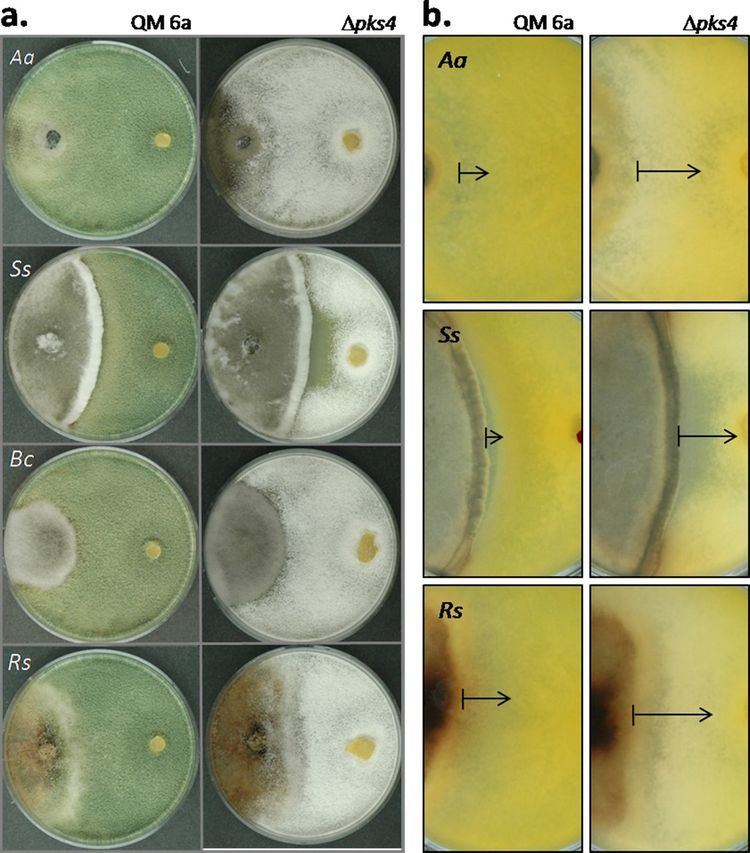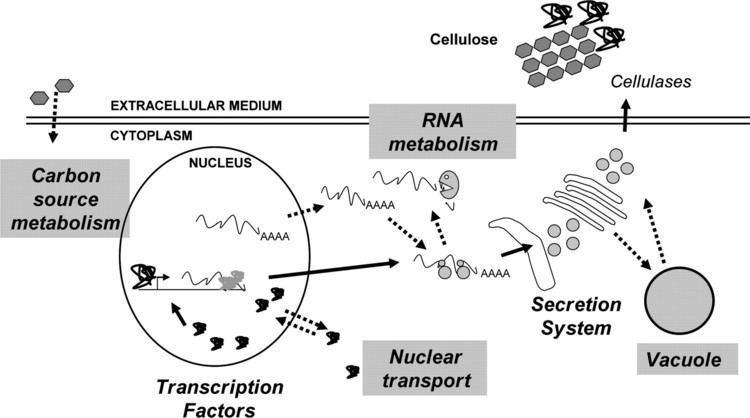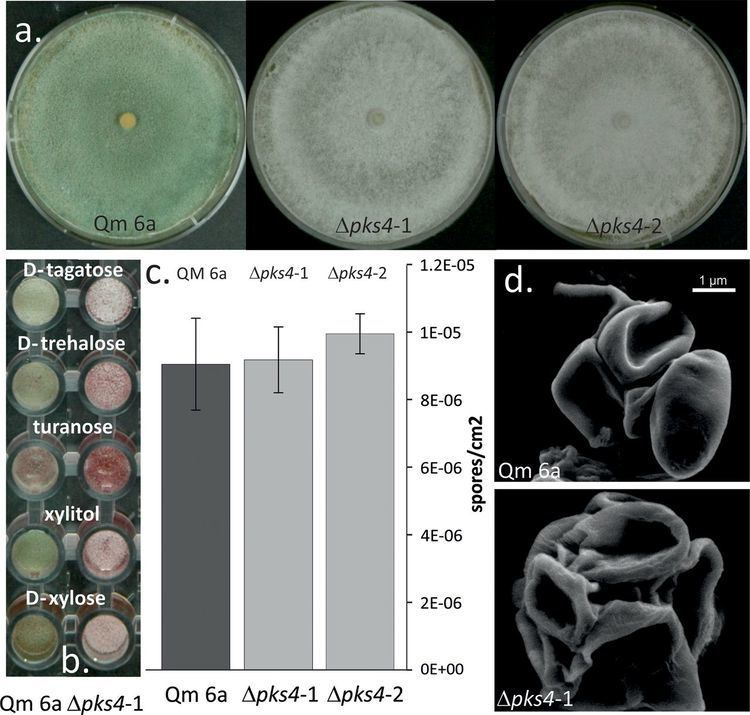Subdivision Pezizomycotina Rank Species | Genus Trichoderma Higher classification Trichoderma | |
 | ||
Similar Trichoderma, Aspergillus niger, Trichoderma viride, Trichoderma harzianum, Aspergillus nidulans | ||
Trichoderma reesei fungi kingdom
Trichoderma reesei is a mesophilic and filamentous fungus. It is an anamorph of the fungus Hypocrea jecorina. T. reesei has the capacity to secrete large amounts of cellulolytic enzymes (cellulases and hemicellulases). Microbial cellulases have industrial application in the conversion of cellulose, a major component of plant biomass, into glucose.
Contents
- Trichoderma reesei fungi kingdom
- Trichoderma reesei breaking down cellulose 3d recreation
- Sexual development
- Use in industry
- References

T. reesei isolate QM6a was originally isolated from the Solomon Islands during World War II because of its degradation of canvas and garments of the US army. All strains currently used in biotechnology and basic research were derived from this one isolate.

Recent advances in the biochemistry of cellulase enzymology, the mechanism of cellulose hydrolysis (cellulolysis), strain improvement, molecular cloning and process engineering are bringing T. reesei cellulases closer to being a commercially viable route to cellulose hydrolysis. Several industrially useful strains have been developed and characterised, e.g. Rut-C30, RL-P37 and MCG-80. The genome of this organism was released in 2008. This organism also has a mating type dependent characterised sexual cycle.

Trichoderma reesei breaking down cellulose 3d recreation
Sexual development

T. reesei QM6a has a MAT1-2 mating type locus. The opposite mating type MAT1-1, was recently found, thus proving that T. reesei is a heterothallic species. After being regarded as asexual since its discovery more than 50 years ago, sexual reproduction can now be induced in T. reesei QM6a leading to formation of fertilized stromata and mature ascospores.
Use in industry

T. reesei is an important commercial and industrial micro-organism due to its cellulase production ability. Many strains of T. reesei have been developed since its discovery, with heavy emphasis on increasing cellulase production. These "improvement programs" originally consisted of classical (ionising-radiation-based and chemical-based) mutagenesis, which led to strains capable of producing 20 times as much cellulase as the QM6a isolate. The ultimate aim in the creation of hypercellulolytic strains was to obtain a carbon catabolite derepressed strain. This derepression would allow the T. reesei strain to produce cellulases under any set of growth conditions, even in the presence of glucose.
However, with the advent of modern genetic engineering tools such as targeted deletion, targeted knockout, and more, a new generation of strains dubbed "hyperproducers" has emerged. Some of the highest performing industrial strains produce up to 100 grams of cellulases per litre, more than 3 times as much as the RUT-C30 strain (which itself produces twice as much as the parent strain NG14 from which it was derived).
